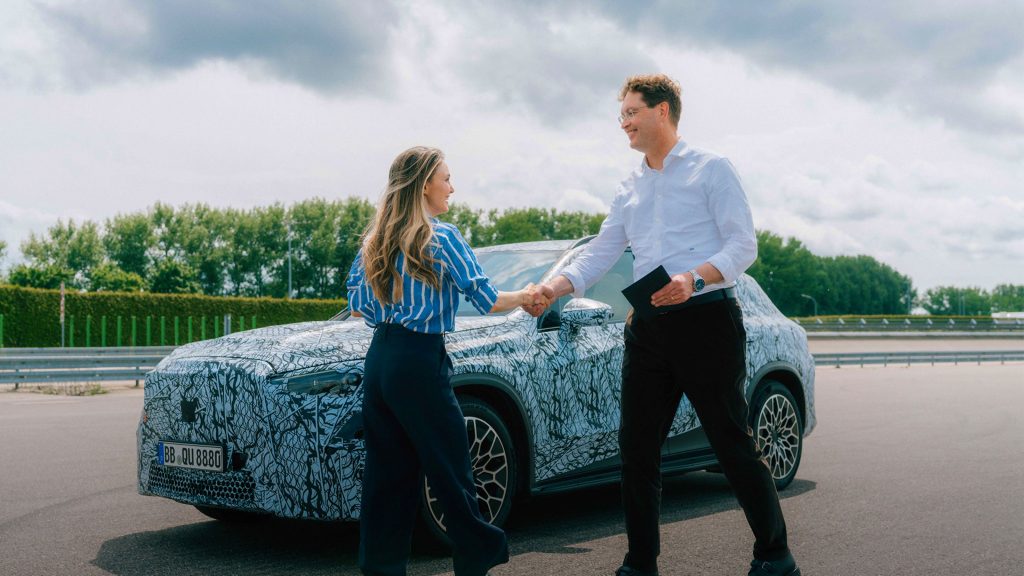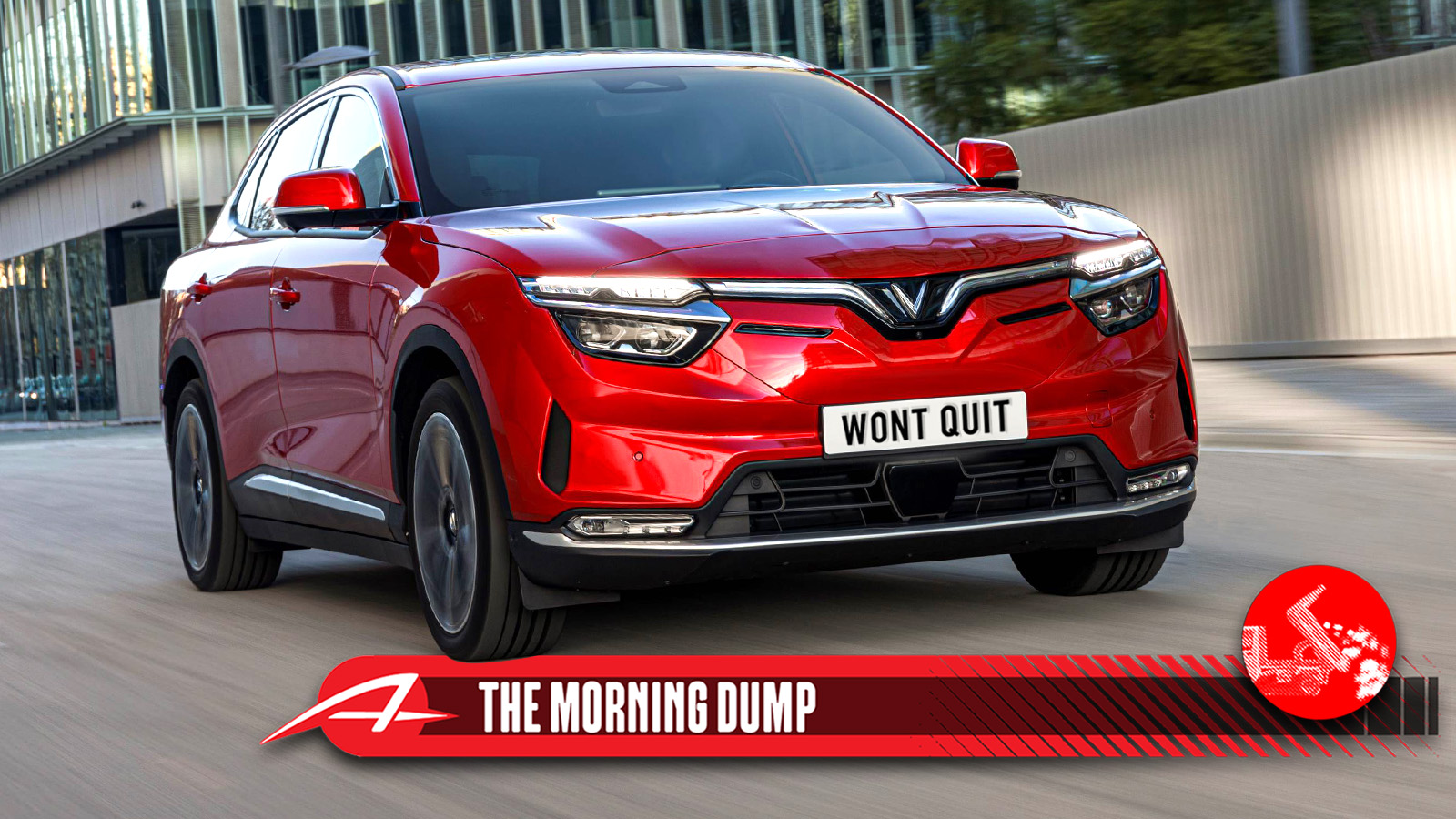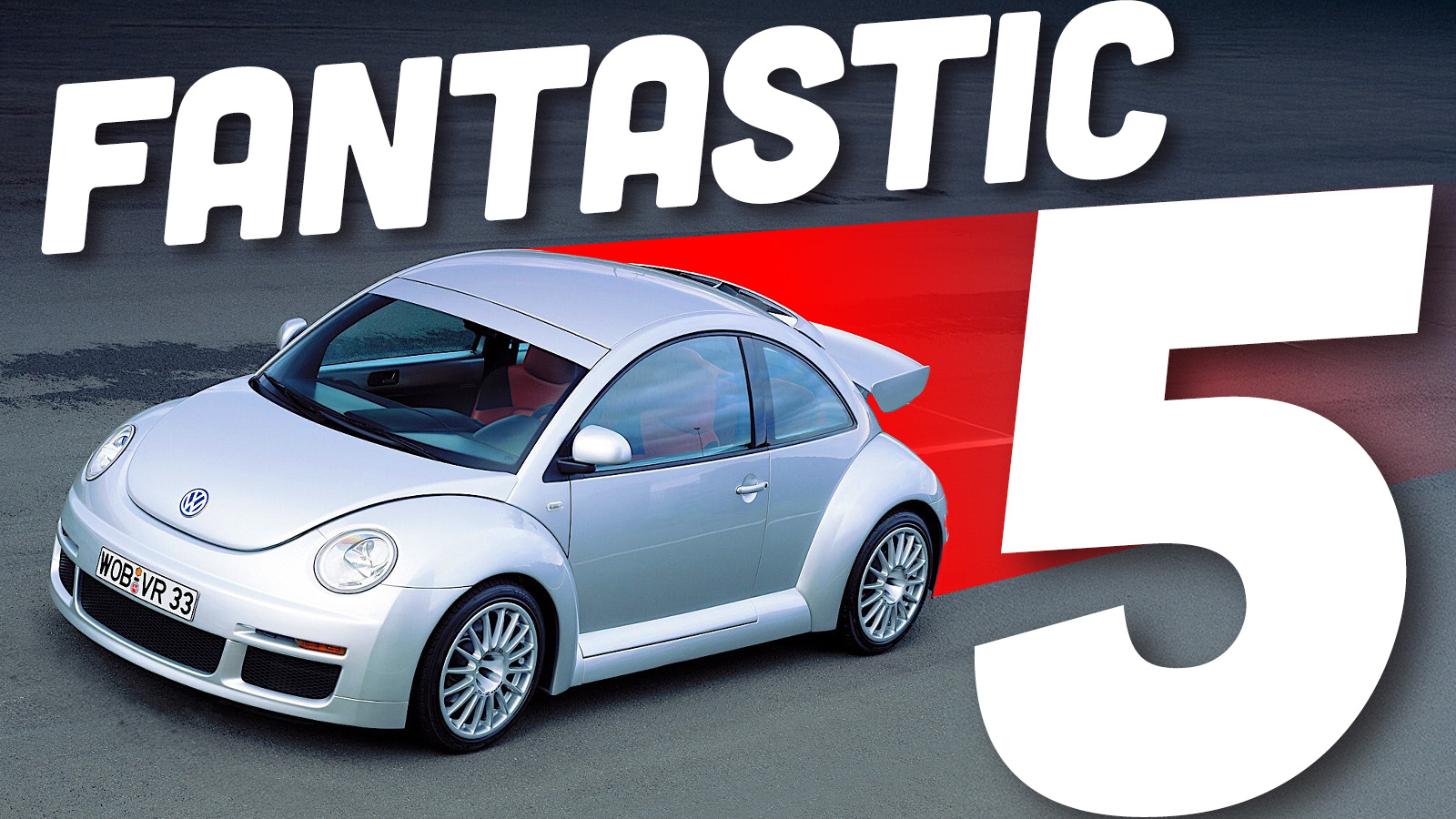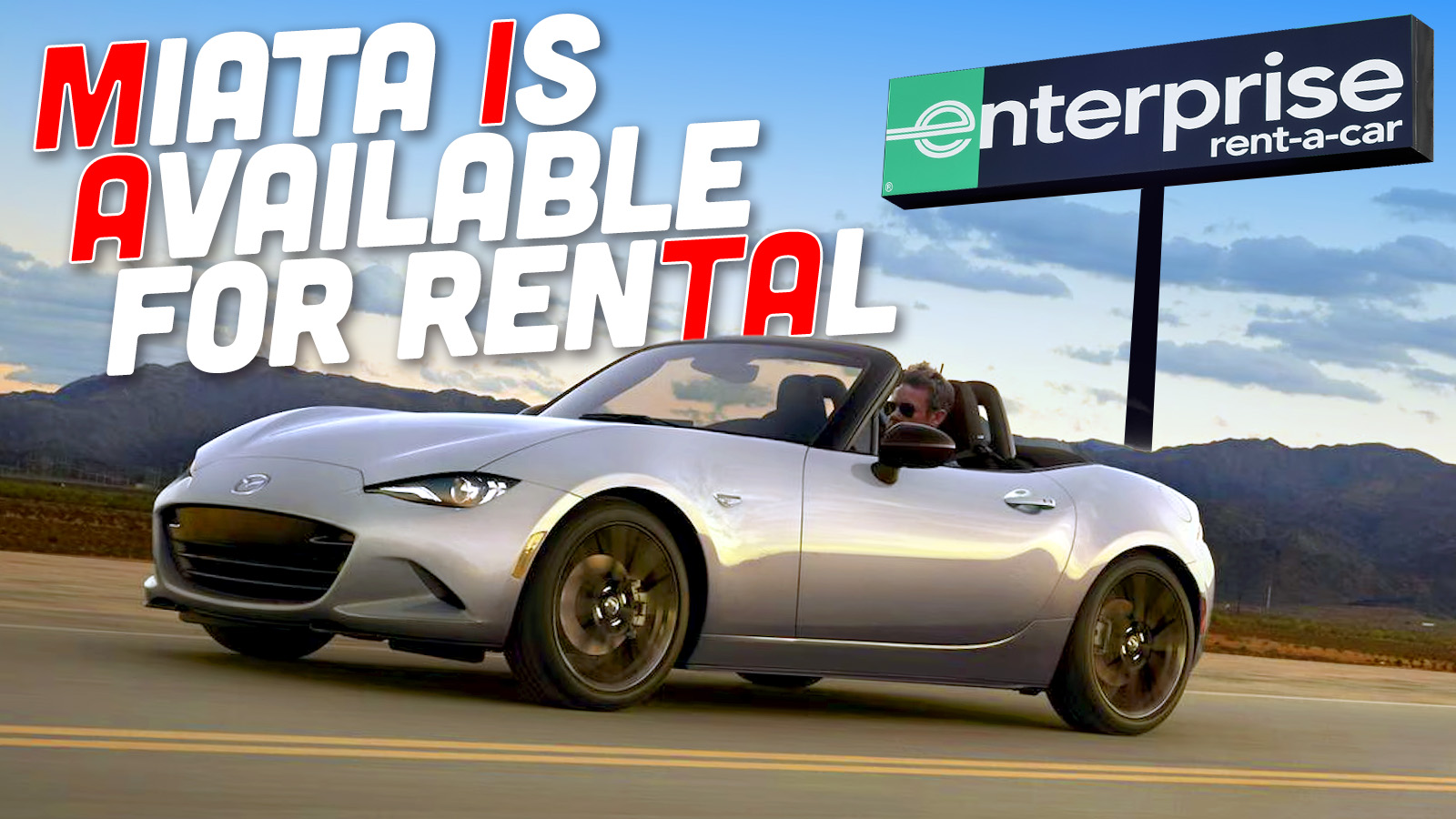I’ve started to see VinFast EVs on the road in New York, and I have to explain to anyone I’m with why my head just snapped to look at what appears to be a normal crossover. “It’s a Vietnamese car!” I exclaim. This doesn’t seem to impress my friends or family. The idea that a car could be built in China, Vietnam, Canada, Slovakia, or wherever is no longer novel. Oh well, it’s impressive to me.
The era of local automotive manufacturers was supposed to be over, or at least it would appear that way to a regular reader of The Morning Dump. Global automakers seemingly have won, and it’s way more likely for a local brand to be absorbed into a bigger one than it is for a new one to be started. VinFast is still making it work, though it seems to be the victim of terrible timing. How is it still going?
Mercedes-Benz Group is one of those companies that’s now a mixture of brands, and while it continues to sell electric cars, the company’s CEO would very much like the European Union to follow the example of the United States and alter its combustion ban in order to remain competitive.
This is one of the big underlying tensions for traditional automakers. On the one hand, no one is better positioned to take advantage of intermediate shifts back towards traditional vehicles. On the other hand, they’re all potentially way too far behind to win a future that’s dominated by Software Defined Vehicles. This is extremely clear when you look at GM, which is trying to lure back Cruise employees.
VinFast Pivots Back Towards Asia

There’s a VinFast dealer on Long Island now, which isn’t the worst place for one to be. If you want a new license to drive an Uber in the city, your only easy path forward is to get an electric car. It’s also possible that, given how cheap they are, someone is willing to take a gamble on the Vietnamese automaker.
If you weren’t aware, VinFast is the project of Pham Nhat Vuong and VinGroup. This is a major company in Vietnam that deals in theme parks, retail, batteries, and real estate. What would it like to be? Everything you love… about cars. As a carmaker, the company has found some success in Vietnam, where it has both a local brand advantage and a production base. Seeing the huge moves by Tesla, Vuong put over $10 billion of the company’s riches into developing an electric car to sell locally and in Western markets
It didn’t go well. Emme Hall covered the launch of the VF8 City Edition for us, and the car stopped working multiple times. The car was recalled after some issues, and VinFast even offered to pay customers for the times its vehicles broke. Not a great start. Even if VinFast had launched a perfect car, I’m not sure it could have competed. The company dove headfirst into the ultra-competitive, oversaturated two-row SUV market. Being built in Vietnam may have offered a price advantage, in theory, but Tesla went on a price cutting spree and lowered prices across the board. Then Congress passed the Inflation Reduction Act, further lowering the cost of cars from Tesla and other competitive automakers.
Oh, did I mention tariffs? Yeah, those happened as well.
Couple all of that with a slowdown in the EV market, and the United States was maybe not the best place to launch. VinFast seems to agree, having delayed its North Carolina plant and, according to this Bloomberg report, the company is starting a pivot to developing EV markets like India and Southeast Asia.
The new target markets are “late bloomers” in terms of EV sales “but hold tremendous potential and are currently entering a vibrant phase of growth,” the company said.
The expansion plans follow VinFast’s push to establish itself in North America and Europe. But the effort was marred by initial bad reviews of its cars and a recall over malfunctioning software. Of the company’s 97,399 global deliveries in 2024, about 90% were in Vietnam. Last year it delayed a planned North Carolina EV factory until 2028.
The southern half of Asia, however, is home to rapidly growing economies with well over 2 billion consumers. Rates of car ownership are lower than in the West and there are fewer established domestic brands. But it’s less affluent, meaning demand likely will be driven by smaller cars with slimmer profit margins.
“Like many other companies, VinFast makes short-term adjustments to its business plans in response to changing circumstances,” the company said in a statement.
As the report notes, Vuong can essentially afford to bankroll VinFast’s EV plans into perpetuity, assuming Vietnam’s economy stays stable. In that way, it’s a lot like other automakers, using its main business to support a long-term EV rollout.
The EU Needs A ‘Reality Check’ On Combustion Ban

My longstanding contention has been that electric cars are inevitable, but that the timeline for their rollout is going to be longer than the early, rosier projections. Does that mean I think governments shouldn’t push for more EVs? I think they have their advantages, and very little change happens in this world without a little push.
Mercedes CEO/very tall person Ola Kallenius thinks that the little push from the European Union is more like a shove straight into the ground.
Per Reuters:
“We need a reality check. Otherwise we are heading at full speed against a wall,” Mercedes CEO Ola Kaellenius told the Handelsblatt business daily of the 2035 goal, adding that Europe’s car market could “collapse” if it goes ahead.
Kaellenius argued that consumers would simply hurry to buy cars with petrol or diesel engines ahead of the ban.
Currently serving as head of the European auto lobby ACEA, the German auto boss has instead called for tax incentives and cheap power prices at charging stations to encourage the switch to electric cars.
“Of course we have to decarbonise, but it has to be done in a technology-neutral way. We must not lose sight of our economy,” Kaellenius said.
Prior to the November election, even the Biden White House was looking for ways to slow-roll its own stricter requirements. The best way to do this, in my humble opinion, is to set a high bar and then to build a couple of steps to help the industry get over it. That appears to be what Kallenius is asking for, and I’m guessing he’ll get that and a lowering of the bar.
Tesla And Nio Lead In ‘Software Defined Vehicles’

It is not enough for car companies to sell good cars. They have to have a vision for the future that’s more than just selling good cars. For a while, it was self-driving cars. Every car was going to be a self-driving car. That hasn’t gone away, but it was happening too slowly for investors. What about car subscription services? That was going to be a great future… until it wasn’t. As mentioned above, there was a dream of everyone swapping their cars for high-margin (hopefully) electric vehicles.
The latest hot item is the “Software-defined vehicle.” This is a car whose biggest appeal is not driving experience, but how well the car distracts you from driving by catering to your every need. To make that work, S&P Global Mobility thinks SDVs need the ability to update remotely and eventually, utilize a fully unified OS with an Ethernet backbone. You can see all this in the chart below:
Gone are the days of cars being built with a hundred various software platforms from disparate suppliers that need 15 miles of wire and a trillion lines of code to work together. How close or how far are we from that?
According to Automotive News, it depends a lot on who is making the car:
“Tesla invented the SDV a while ago,” said Philippe Houchois, an analyst at Jefferies.
Trailing Tesla are China startups Nio and Xpeng as well as U.S. EV makers Rivian and Lucid, according to Gartner’s 2024 Digital Automaker Index, which reflects progress in hardware, firmware update capabilities, rollouts of over-the-air updates, and use of AI in vehicle software.
Tesla’s rivals are about 70 percent to having SDVs because of “limitations in architecture, computing power and the number of AI use cases,” Pacheco said.
Legacy automakers including JLR, Mazda and Toyota fall below the 10 percent threshold in Pacheco’s assessment. Their systems use “old-school software,” he said.
This goes a long way to explain why Volkswagen decided to invest in Rivian, hoping to get closer to being competitive.
GM Would Maybe Like Some Of Those Cruise Employees Back

According to its own filings, General Motors spent something like $10 billion on its robotaxi firm Cruise before safety issues forced it to pull the plug. The automaker said it would incorporate the team and technology into future products, but it sounds like that didn’t exactly happen, with Bloomberg reporting that the automaker is reportedly looking to convince some older Cruise employees to come back. From Bloomberg:
The plan was detailed in an employee meeting on Aug. 6 by Sterling Anderson, the former Tesla Inc. Autopilot chief who joined GM earlier this year, said the people, who asked not to be identified because the meeting was private. Anderson said he sees autonomy as the future and that GM will add more talent, including trying to bring back some Cruise workers and hire new staff for the automaker’s Mountain View, California, office and other locations, the people said.
GM told Bloomberg that it has been running human-driven vehicles on public roads gathering data for the development of self-driving technology.
“We’re accelerating the development of autonomous driving technology capable of operating without active human oversight,” spokeswoman Chaiti Sen said in a statement. The lidar-equipped fleet is logging data to “build simulation models that will guide development.”
SuperCruise is the best hands-free driving system I regularly use, but it’s still far from SAE Level 5 autonomous driving.
What I’m Listening To While Writing TMD
I finally saw Alex Ross Perry’s truly weird and spectacular Pavements. How to describe it? It’s both a film about the band and a film about films about bands. There’s a real/fake Pavement museum (I went!), a real/fake Pavement biopic starring Joe Keery from Stranger Things as Stephen Malkmus, a real/fake behind-the-scenes making of the biopic, and a real/fake musical that they actually performed (I didn’t get to go see it and will forever be sad about this). Oh, and there’s a real-real behind-the-scenes documentary of the band’s last show. These are all expertly woven together, and I think if you’ve never heard of the band the movie will be particularly hilarious. If you’re a huge fan, like myself, it’s also quite enjoyable, though more so on second viewing. If you’re a moderate fan of the band, it might not work.
My favorite part of the film is by far the musical. The line on Pavement’s slacker rock was that the strange, impenetrable lyrics were mostly nonsense to anyone who isn’t Malkmus himself. That’s a part of the mystique, though what the jukebox musical version displays is the emotional backbone and wonderful storytelling buried under the too-cool-to-be-good aura. Here’s the finale, including the leads from both the Alanis Morissette and the Green Day musical.
How is this possible? How does it work? Does anyone have a full copy of the musical they can send me?
The Big Question
Where does your vehicle fall on the SDV chart?
Top photo: VinFast










Somewhat Drivable Vehicle? Yeah I got a bunch of those.
I know we’re all here for the cars, but I cannot believe that two pages into the comments, not a single person has talked about Pavement–and poor Hardigree deployed the rare second paragraph AND an earnest entreaty!
No, I don’t like or even know Pavement beyond the fawning praise I’ve been reading for thirty years, but “hilarious” doesn’t feel like a word that’s ever been used to describe anything they’ve ever done. Might have to check it out.
You see vf3 all over Vietnam with the larger models in the bigger cities and as taxis. With the amount of counties in SEA that have a ongoing conflict with China, Vinfast has been gaining traction in those countries. Their battery swap scooters are interesting too and with a recent mandate in Siagon and Hanoi they will sell a lot more. The vinfast guy by most accounts has strong political connections in Vietnam so I wouldn’t doubt the NC factory coming online is part of Vietnams terrif deal. The scooter line and the small truck they have and have teased for north America could make traction.
Denver is quite high for EV adoption and I don’t believe I’ve seen a VinFast. Tons of Teslas, Rivians, Ioniqs, Lightnings, along with some Lyriqs and Lucids and Hummers, so quite the gamut.
And for The Big Question, thankfully I have an 18 year old Tacoma. She’s perfect.
I think the closest vinfast dealer to Denver is in Wichita. I’ve seen them in the Denver metro but they are about as rare as a ocean outside of markets they are sold in.
Level 0 on both. The ’24 Kia Forte GT has Kia Connect services (remote start/locking available via the phone app as well as geofencing, tracking, etc.) but can’t receive OTA updates or send driver data to Lexis/Nexis, which I’m perfectly fine with. The NA Miata… is an NA Miata.
Despite our vehicles not being old (2020 and 2018) I would probably describe them as level 0. I don’t think the version of UConnect I have receives OTA updates. This is one of the benefits of only owning base models I suppose.
TBQ – I’m guessing Level 1?
I deliberately bought a truck without fancy cruise control and shut off lane keeping after about two weeks of it driving me crazy (plus it’s borderline dangerous going through construction zones where you may cross lines that you normally wouldn’t).
Also, I work in the software industry. I know how the sausage is made. Software is, for the most part, crap.
You’ll have to drag me kicking and screaming into an SDV.
My new washing machine has a wifi connection for some reason. Does that make it a level 1 SDA?
Mine does too, but I’ve never enabled it. If there’s one appliance whose opinions I especially don’t want, it’s the washing machine.
I worked for an appliance company for years. I was That Asshole(TM) who would always throw in a, “No one wants that” comment when “smart” appliances were discussed.
Marketing guy: “Your smart toaster can text you when your toast is ready!”
Me under my breath: “noonewantsthat”
Leader guy: “Pupmeow, we have told you many times that these comments are not productive.”
But, seriously, nobody really wants it. Well, maybe some people do, but they’re idiots, and idiots shouldn’t really be treated like people. Though, they do constitute a lucrative consumer market, so, yeah, I guess I see the point, let’s have an app for every damn appliance, why not? Toasters, refrigerators, dishwashers, irons, shoe buffers, egg beaters, keep on going as long as the VC money is coming in
Never forget Juicero: https://www.cnet.com/culture/juicero-is-still-the-greatest-example-of-silicon-valley-stupidity/
Appliance manufacturers do love to grab onto whatever the latest buzzword is, back in the ’50s, Westinghouse made a big deal out of their washing machines having a “Program Computer”. It was just some relays and sensors, but computers were a really big deal in the 1950s, so might as well throw it on there
In the ’70s, everything had to be labeled Solid State
I would feel like it’s judging me .
“Jeeze, why me? Why did I have to get this disgusting jb996 guy. Oh God, what did he put in me now?!”
Full Level-5 SDV coming next year!**
Download your entire car directly into your driveway! No more dealers or hardware! No more maintenance costs! Let your car drive the information superhighway and make money while you sleep! Buy the package now for only a $15,000 reservation add-on/pre-purchase to your new car.**
.
.
.
** No guarantee expressed or implied. Actual performance, capabilities and delivery timeline are unknown, and may actually never happen due to fundamental physical limitations, technical difficulties, or if we just decide not to do it. No warranties nor refunds on pre-purchase of these capabilities. By purchasing, you agree, with no recourse, that your money may instead be used towards a massive CEO bonus for under-performance.
So, you’re a former member of the Tesla marketing team Elon axed? You know you’re not supposed to take company materials with you when you’re let go, right?
I am not into self driving vehicles much. But, if I was in daily traffic, like the Merritt Parkway or 95 between Bridgeport and NYC every morning, one could make an excellent argument that “self driving” or rather “super fancy cruise control” would be a great win.
I’ve actually recently made this exact argument with my best friend. He is on these roads, with a 2018 Tacoma with a manual transmission. This is perhaps the worst choice for that environment.
My argument is simple, let the car handle keeping you 10-20 feet behind the guy in front of you while you just hold a finger on the steering wheel. The fatigue drops significantly, and makes the slog so much better.
I’ve had a similar experience with One-Pedal-Driving in my Bolt. I love me a manual, and this is my first non-manual, but that OPD experience made my 33 mile commute sooooooooo much easier. It would have been nice to have a fancier cruise control, but even the OPD dropped my fatigue and frustration levels to a minimum.
Oof. I love my manual … except the 2-3 times a month I have to drive it in Chicago or Detroit traffic. And then I start to really loath it.
Totally agree with you on the use case for self-driving in heavy, slow traffic.
“Software-Defined Vehicle” (SDV) is mostly marketing spin. The term sounds futuristic, but it doesn’t actually define anything specific. If you buy a car for its software features, sure—it’s an SDV for you. If you buy it to project status, it’s a Fashion-Defined Vehicle. If you buy it because you need to fit four kids and their lacrosse gear, it’s a Capability-Defined Vehicle. You could chart “levels” of any of these just as easily.
In reality, an SDV is just a bundle of features—like infotainment systems, driver assists, and app integration—packaged in a way that sounds cutting-edge. It’s corporate jargon designed to make old ideas feel new, mainly to keep shareholders and boards nodding in approval.
Legacy automakers saw Tesla gain attention by framing its cars as software-first, and realized they could do the same—talk about “SDVs” and distract from the fact that they’re still wrestling with the same old manufacturing, design, and market challenges.
I am not saying that software isn’t an ever-more important part of how cars operate. But that doesn’t automatically mean the product is defined primarily by software.
The quote above is 100% B.S. because there is no threshold to cross that makes a car software-defined or not. Again, the progress of how software is used is no different than any other characteristic in that you could present the progress in a similar table.
SDV only matters to people who have a Software Defined Perspective.
My SDV chart rating…possibly a 1? At least for the ’21 Jeep; I think it’s capable of over-the-air updates. There’s a lot to be said for a vehicle that doesn’t need to connect to the internet. The fairly modern aftermarket stereo in the ’09 WK hasn’t even demanded anything.
In the Raleigh area I’ve seen one Fisker and a couple of VinFasts (I’m pretty sure they’re different colors). It’s been very disappointing, but not really surprising, to see how the factory deal has fizzled out.
**pokes VinFast with a stick** Do something…
My buddy works for one of the companies who was building the North Carolina VinFast factory. Gonna’ ask him what the timeline pushback means for him.
As long as we get a few more good years of corporate profits, who cares if the planet is heading full speed towards the wall, amirite??
No wonder people are cheering when CEO’s get clipped.
0 and CANBUS for both of them.
My car has a cassette player with a broken volume knob.
Ha! Our 99 XJ has a volume knob made out of wood, cut using a hole saw. My son knocks on it prior to any long road trip.
If normal people had any idea how software is developed they’d never want autonomous driving. I’ve been in multiple software dev companies ranging from huge to start up and it’s a big nope from me.
As Kevin Mitnick stated, the interesting thing about systems isn’t how they work, it’s how they fail. I’m also out on autonomous driving.
Maybe we should try this new technology that some places are trying out, called “Trains”.
Programming is what caused me to drop out of Computer Engineering. I’ll read schematics, wire maps, logic gates, etc. But you’re telling me I need to learn a language where a single spelling mistake means nothing works? I’m out. Call me when you need to design the circuit.
I’ve always told people that I trust the robots my company makes implicitly. It’s the programmers I question.
Reminds me of a great tweet from years ago.
Tech enthusiast: My entire house is smart!
Tech worker: The only thing connected to the internet is my printer and I keep a gun next to it in case it makes a noise I don’t recognize.
Just wait until the software writes itself and we can’t see inside the black-box….That’s the dream…feed it the requirements and the models, and let it chew on 10,000,000 interactions. Meanwhile another AI writes test cases and determines the appropriate level of coverage to minimize risk to acceptable levels. SDV is then enabler for continuous updates (since the car with be released with minimum viable SW). Good times.
Yeah but the people making the decisions to use AI don’t know what makes a good requirement…
“Well then I just have to ask why can’t the customers take them directly to the software people?” – Bob
For a though experiment you can keep going up levels to see which point you need to start for AI to solve the problem without human induced errors/bias. Have it write SW requirements based on laws/legislation – nope. Have it write the laws/legislation based on the stated problem – nope. Have it look at the data and identify the problem – maybe but we won’t like the results when it turns out humans are the problem. I keep running into this circular problem where AI that is any good probably isn’t any good for us. At least not good for those of us who do not own private islands.
I’ve got one vehicle with variable distance cruise control (which tends to piss me off on a regular basis), lane assist (that never gets turned on) and auto high/low beam headlights that never seem to switch when I think they should (ditto for the automatic wipers). It has some sort of monthly subscription available for it, but I refuse to pay for such things and other than losing out on remote start, I have no idea what other potential benefits it would offer me. More importantly, I don’t care.
It’s as close to SDV as I want to get.
The other vehicles all have the usual power windows & locks, non-distance sensitive cruise control, manual climate control, etc. and I enjoy driving them just as much if not more.
I really get the feeling that people who don’t like cars are the ones the SDV concept targets, but I’m reminded of the Nissan Quest and their marketing of it as “the minivan for people who don’t want a minivan”. They learned the hard way people who don’t want a minivan don’t buy a minivan. I’m guessing the same thing will happen here – people who don’t like cars won’t buy cars.
Hopefully this whole SDV craze will die off like the subscription model is currently doing. What’s next, a SDV motorcycle or bicycle? As a concept, it really makes no sense.
I really don’t like that SDVs are tied to EVs in a way that people think that’s the only way you can get them.
Conversely that’s one of the major selling points to me about the Slate, is that it literally comes with no infotainment. My 2000 Ford Ranger is an EV and has an analog gauge cluster and regular radio I can swap to whatever I want. The special “EV” part of the cluster is there’s a guess-o-meter instead of a tach…and…that’s about it, and that’s mainly all you need with an EV, remaining charge left, like a fuel gauge.
My Bolt is early enough that it’s not too integrated, doesn’t even have adaptive cruise, and. Our Honda Prologue lease the lane assistance/adaptive cruise are nice but not something we use on the daily, my wife does complain about the automated braking going off too much but when I’ve driven it, that seems to operate as expected so could be operator error 😀
I do know people with newer Teslas that do use the self driving daily, and now with Grok it does that little bit extra, and if that’s what you want, especially for a mindless morning commute, that’s great, I’d just rather have simpler not reliant on the cloud in my cars.
I agree, I just want the vehicle to work reliably, even if the features are super basic. Having the clock, when set to “automatic time”, reset to GMT anytime the car loses cell service (ie, almost every drive) is bad enough that I do not want anything in the vehicle even remotely reliant on internet service.
My car is 16 years old. SDV wasn’t even a twinkle in its mamas eyes when it was conceived. And that exactly how I plan to keep it.
Ditto.
My ’94 Toyota is pre OBD II port, so I’d say it’s high on the Spectacularly Dumb Vehicle scale and is the AOL dial up (RIP) equivalent on the Software Defined Vehicle chart.
LOL, me too. But sometimes I wish it was a ’95 so I had the nice diagnostics that come with OBD II.
I am torn on SDV vehicles. I am, generally, frugal, so I don’t have any very new cars. My 2017 Cruze has a lot of modules but is a solid vehicle, that is quite safe, comfortable, gets great fuel mileage. If it had SuperCruise I would like it even more, and that does mean some kind of “SDV” to function. I would take that.
But for fun? Nah, it actively gets in the way of fun driving. I can seriously respect older cars (I have owned as old as 1963) for the simplicity and knowing that when I, the Driver, do something, the car will do it. If I am not a good driver, I quickly pay the price there. There are instances of fast cars being tuned well (like the current c8 corvette) that I dont feel the car is intrusive during most fun times, but I don’t need the car to be full SDV to get that.
I don’t want SDV for most of the reasons that companies sell us on though, I dont want apps or games on my dash, I dont want OTA’s that kill the battery or stop the vehicle from being used, I dont use any in-car navigation. Again, SuperCruise is really nice for my long commutes, and things like remote starting my car 10 minutes before I head home on a cold winter day by using my phone as I am too far away for the key to bein range is nice but I dont see much else I would want. My Cruze is a manual so I dont get that remote start option anyway.
Vinfast dealers popped up pretty quick in NC, so VF8s are out there too, maybe the same or more around as like the Ariya or Soltera/bZ4x. I know VF9s have been on sale but I haven’t seen any and my closest dealer doesn’t have any in stock. Dealers in other cities have a handful but still 2024s, news on when the ’25s will land seems thin.
I’ve got a 2022 CX-30 Turbo, and it being at tier 0 of SDV is exactly where I like it. It’s got Carplay, adaptive cruise, and heated seats, and I never have to worry about an OTA freezing my infotainment or bricking the car.
Self Driving, nope. Closest I have in the fleet is the warning lights when someone is passing in the mirrors and 360 Camera for parking or trailer connection.